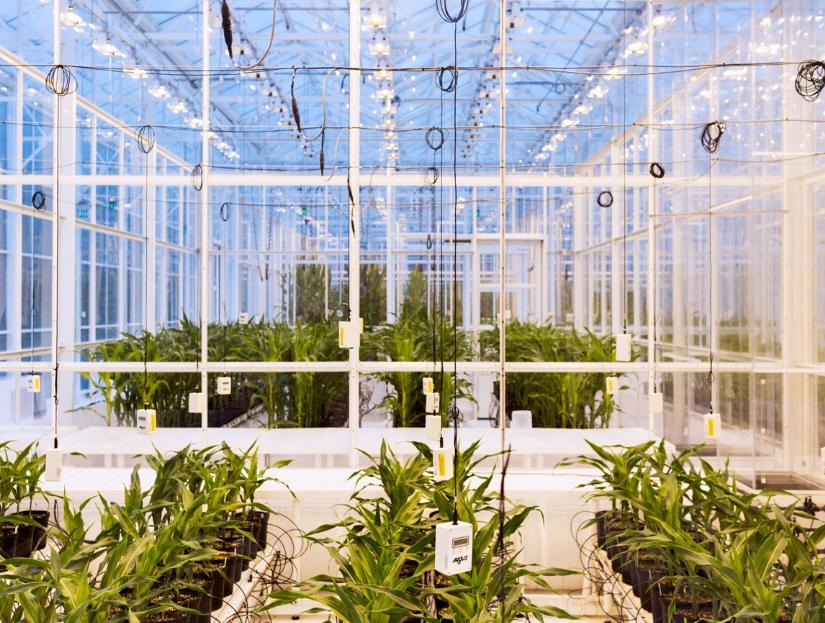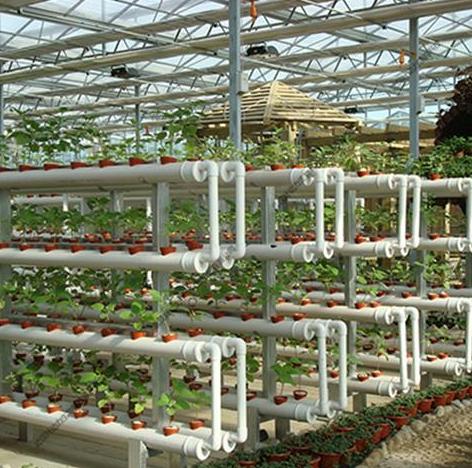Imagine walking into a basement in the middle of the city. Instead of parked cars and dim lights, you find rows of fresh green lettuce growing under purple LED lights. No soil. No sun. Just quiet growth powered by technology.
This isn’t science fiction—it’s vertical farming. And it’s becoming more real, more scalable, and more relevant in the face of climate challenges, urban growth, and rising food demand.
With search terms like "urban farming," "future food systems," and "plant factories" trending more than ever, vertical farming is attracting attention from scientists, city planners, and even home growers. But what exactly is it? How does it compare to traditional greenhouse farming? And could it really reshape the future of how we grow our food?
What Exactly Is Vertical Farming?
Vertical farming is the practice of growing crops in stacked layers, usually indoors. Instead of relying on sunlight and soil, plants grow under LED lights with nutrients delivered through hydroponic or aeroponic systems. The environment—light, temperature, humidity, and CO₂—is carefully controlled by sensors and automated systems.
Lettuce growing in office basements. Microgreens thriving inside shipping containers. Herbs harvested from supermarket rooftops. These aren’t future concepts—they're real, functioning farms in the heart of our cities.
成飞温室 (Chengfei Greenhouse), a leading name in smart agricultural technology, has developed modular vertical systems suitable for urban environments. Their compact designs make vertical growing possible even in tight spaces, like malls and residential towers.

How Is It Different From Traditional Greenhouse Farming?
Both vertical farming and greenhouse farming fall under the broader umbrella of controlled environment agriculture (CEA). But the differences lie in how they use space and energy.
|
Feature |
Greenhouse Farming |
Vertical Farming |
| Layout | Horizontal, single-level | Vertical, multi-level |
| Light Source | Mainly sunlight, partial LED | Fully artificial (LED-based) |
| Location | Rural or suburban areas | Urban buildings, basements, rooftops |
| Crop Variety | Wide range, including fruits | Mostly leafy greens, herbs |
| Automation Level | Medium to high | Very high |
Greenhouses like those in the Netherlands focus on large-scale fruit and vegetable production using natural light and advanced ventilation. Vertical farms, by contrast, operate entirely indoors with climate control and smart automation.
Why Is Vertical Farming Seen as the “Future”?
✅ Space Efficiency in Crowded Cities
As cities grow and land becomes more expensive, it gets harder to build traditional farms nearby. Vertical farms maximize yield per square meter by stacking crops upward. In some systems, just one square meter can produce over 100 kg of lettuce per year.
✅ Immune to Weather Disasters
Climate change has made farming more unpredictable. Droughts, floods, and storms can wipe out entire harvests. Vertical farms operate independently of outdoor weather, ensuring consistent production year-round.
✅ Fresher Food with Fewer Miles
Most vegetables travel hundreds or thousands of kilometers before reaching your plate. Vertical farming brings production closer to consumers, reducing transportation, preserving freshness, and lowering emissions.
✅ Supercharged Productivity
While a traditional farm may produce two or three crop cycles a year, a vertical farm can deliver 20+ harvests annually. Fast growth, short cycles, and dense planting result in dramatically higher yields.
What Are the Challenges?
While vertical farming sounds ideal, it’s not without its downsides.
High Energy Use
Artificial lighting and climate control demand a lot of electricity. Without access to renewable energy, operating costs can soar and environmental benefits may be offset.
High Startup Costs
Building a vertical farm is expensive. The infrastructure, software, and systems require significant capital, making it difficult for small farmers to enter the field.
Limited Crop Variety
So far, vertical farms mostly grow leafy greens, herbs, and microgreens. Crops like tomatoes, strawberries, or peppers need more space, pollination, and light cycles, which are easier to manage in greenhouses.
Complex Technology
Running a vertical farm isn’t just about watering plants. It involves AI systems, nutrient algorithms, real-time monitoring, and even robotics. The learning curve is steep, and technical expertise is a must.
So, Will Vertical Farming Replace Greenhouses?
Not quite. Vertical farming won’t replace greenhouses—but it will complement them.
Greenhouses will continue to lead in the production of fruit-bearing and large-scale crops. Vertical farming will shine in cities, extreme climates, and locations where land and water are limited.
Together, they form a powerful duo for sustainable food systems:
Greenhouses for diversity, volume, and outdoor efficiency.
Vertical farms for hyper-local, clean, and year-round production in urban spaces.
Farming Upwards: A New Chapter in Agriculture
The idea that we can grow lettuce in a downtown office or fresh basil inside a parking garage used to sound impossible. Now, it’s a growing reality—powered by innovation, necessity, and creativity.
Vertical farming doesn’t end traditional agriculture. It offers a new beginning—especially in cities, where food needs to be closer, cleaner, and more sustainable.

Welcome to have a further discussion with us.
Email:Lark@cfgreenhouse.com
Phone:+86 19130604657
Post time: Jul-11-2025







 Click to Chat
Click to Chat